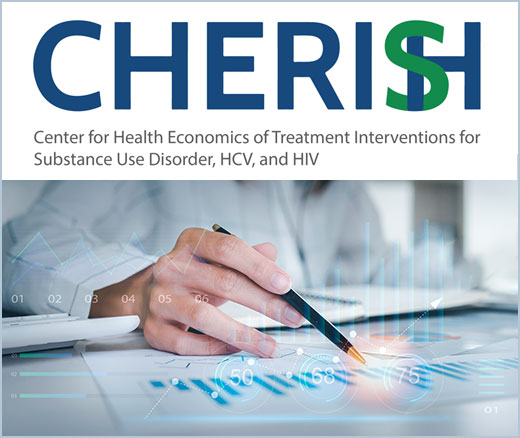
New Model Predicts Stimulant Overdose Risk Among Medicaid Patients
LDI Fellows Used Medicaid Data to Identify Individuals at Highest Risk for Cocaine- and Methamphetamine-Related Overdoses, Paving the Way for Targeted Prevention
Substance Use Disorder
Blog Post

Prescription drug monitoring programs (PDMP) have been crucial tools to address unsafe opioid prescribing. High rates of prescribing stoked the flames of the opioid crisis in the early 2000s, but opioid prescriptions have steadily decreased over the past decade. Unfortunately, opioid-related deaths have continued to rise each year.
Many states have enacted comprehensive mandates that all clinicians consult the PDMP prior to prescribing an opioid for any given patient. These mandates seek to hold prescribers accountable and ensure sustained use of the databases. Previously, our team has shown that comprehensive mandates work, reducing not only prescriptions but also opioid-related hospitalizations. We have also shown that comprehensive mandates specifically reduced prescriptions for medications or combinations of medications with particularly high risk for misuse or overdose.
Yet, we have to consider all the consequences of these policies – both intended and unintended. Specifically, we need to understand whether comprehensive mandates deter clinicians from writing opioid prescriptions for appropriate indications. In a new study published in JAMA (and presented at the 2021 AcademyHealth Annual Research Meeting), we focus on opioid prescribing for two groups of patients with chronic illness that can cause severe pain: sickle cell disease and cancer with bone metastasis.
Patients with sickle cell disease had a relative reduction of 27% in the likelihood of obtaining an opioid in states with a comprehensive mandate compared to other states with no such mandate. Patients with cancer with bone metastasis had a 23% relative reduction.
Patients with either condition often seek treatment for acute exacerbations of pain in emergency departments (EDs), where opioids are used to help alleviate severe symptoms and help patients maintain adequate control of acute pain after discharge. In this circumstance, clinicians balance the competing goals of alleviating symptoms until patients contact or visit their own physicians, mitigating risks associated with opioid prescriptions, and adhering to state and institutional policies.
In our study, we found that implementation of comprehensive PDMP mandates were associated with reductions in opioids dispensed within three days of ED encounters of patients with sickle cell disease or cancer with bone metastasis. Patients with sickle cell disease had a relative reduction of 27% in the likelihood of obtaining an opioid in states with a comprehensive mandate compared to other states with no such mandate. Patients with cancer with bone metastasis had a 23% relative reduction. We also found that the amount of opioids prescribed to patients with sickle cell disease was significantly lower after implementing a comprehensive mandate; there was no significant difference in this outcome for patients with cancer with bone metastasis.
Many possible explanations exist for these reductions. The first is that mandated consultation with PDMPs successfully alerted prescribers to the possibility of misuse or diversion, resulting in an appropriate reduction. It is also possible that PDMP mandates change clinician behaviors, even without concern for misuse. The additional burdens associated with having to consult the PDMP or liability concerns may decrease willingness to prescribe any opioid to any patient. For the patient populations that we studied, decreased access to pain medications in the setting of an acute exacerbation could result in inadequately treated severe pain.
Importantly, our study could not determine whether opioid prescriptions were withheld from patients who needed them. In addition, our study was limited in that we could not assess whether prescriptions were written by ED clinicians or other clinicians who manage these chronic conditions.
Regardless, the study raises important and difficult questions as the health care system strives to prescribe opioid pain medications only to select patients with a limited set of indications for short periods of time. Because opioids are considered first line treatment for patients with sickle cell vaso-occlusive crisis or with boney cancer pain – and are specifically excluded from guidelines recommending reduced opioid prescribing for chronic non-cancer pain – the reductions we document may indeed reflect unintended consequences of PDMP mandates.
One of the questions our study raises is whether PDMP mandates exacerbate racial inequities in access to treatment of severe pain. Structural racism may drive relatively more Black patients to seek care in EDs for treatment of chronic painful conditions – compared to other settings. The vast majority of patients with sickle cell disease are Black, and disparities in treatment of severe pain are well-documented. Black patients are already more likely to have inadequately treated pain for acute conditions, including children with appendicitis. State policies limiting opioid prescribing must be monitored for their implications for racial inequities.
Our team of CHERISH investigators will continue to explore these questions and delve further into the important consequences of opioid prescribing policies.
The study, Prescription Drug Monitoring Program Mandates and Opioids Dispensed Following Emergency Department Encounters for Patients with Sickle Cell Disease or Cancer with Bone Metastasis, was published in JAMA on June 14, 2021. Authors include Hao Zhang, Austin Kilaru, Zachary Meisel, and Yuhua Bao.

LDI Fellows Used Medicaid Data to Identify Individuals at Highest Risk for Cocaine- and Methamphetamine-Related Overdoses, Paving the Way for Targeted Prevention

Penn and Four Other Partners Focus on the Health Economics of Substance Use Disorder

Penn Medicine’s New Summer Intern Program Immersed Teens in Street Outreach Techniques

LDI Experts Offer 10 Solutions to Get More Help to Seniors With Addiction

More Flexible Methadone Take-Home Policy Improved Patient Autonomy
Research Brief: LDI Fellow Recommends Ways to Increase Availability